Compound Specific Stable Isotopic Analysis of Amino Acids
The food-rich waters of the Flower Garden Banks National Marine Sanctuary in the Gulf of Mexico attract many highly migratory and high-level trophic predators such as tunas, billfishes, and sharks. My dissertation research focuses on estimating the spatial and temporal movement patterns of the scalloped hammerhead (Sphyrna lewini), silky (Carcharhinus falciformis), and sandbar (Carcharhinus plumbeus) sharks throughout the Flower Garden Banks marine ecosystem and beyond to the greater Gulf of Mexico. To further develop our understanding of how these species utilize the Flower Garden Banks, we are attempting to quantify the trophic ecology (or food web position) of each species using a novel stable isotope technique, dried blood spot analysis.
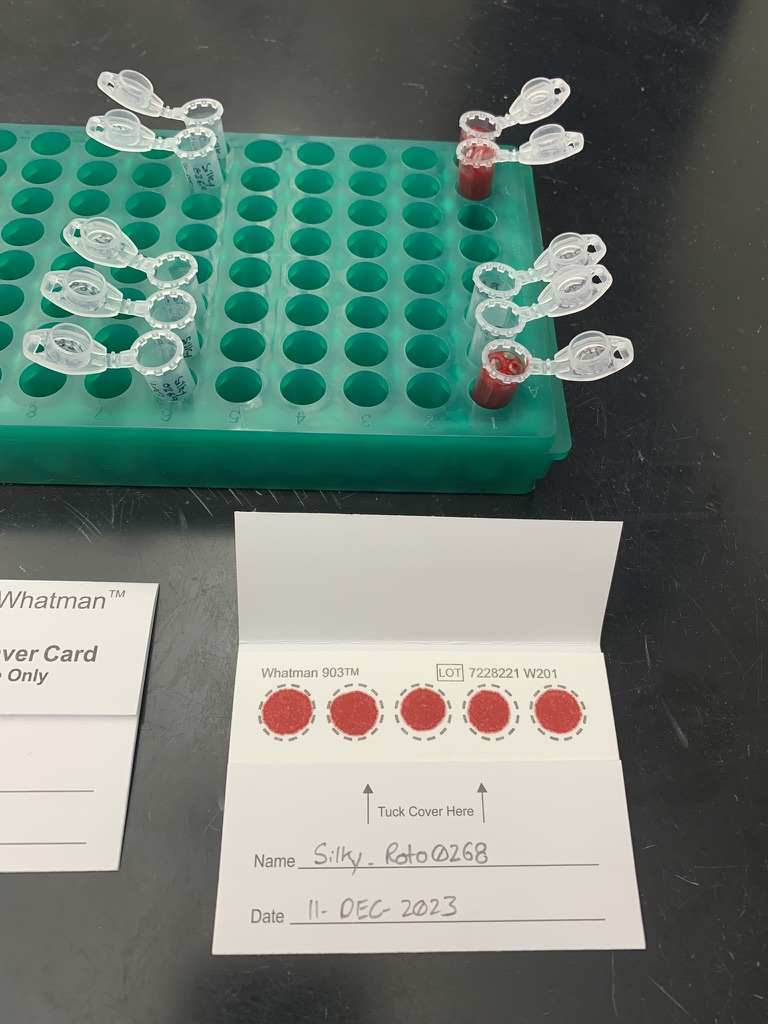
Dried blood spot analysis. Photo © Brett Sweezey
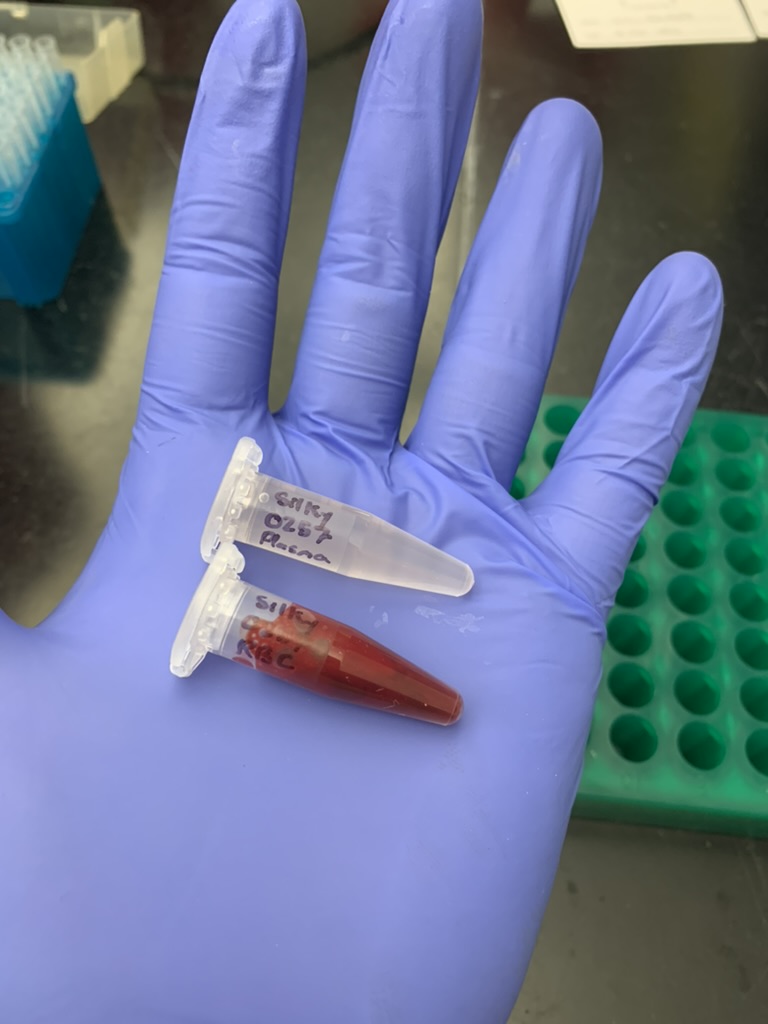
Biopsy samples. Photo © Brett Sweezey
The use of dried blood spot analysis relies on using a technique called compound-specific isotope analysis of amino acids (CSIA-AA). That is a mouthful! In simple terms, this analytical method is used to reduce the difficulties associated with bulk stable isotope analysis (SIA). Traditionally, SIA is used to estimate the trophic ecology of species by examining the naturally occurring stable isotope ratios of nitrogen in their system (expressed as δ15N). A species higher in the food chain will have a predictable increase in the amount of δ15N found in their tissues with increasing trophic levels. However, it can be difficult to interpret the trophic level of a species if the base nitrogen level in a marine ecosystem is unknown. Additionally, there can be inconsistencies with how nitrogen transfers between trophic levels or the amount of nitrogen that accumulates within an individual may vary per species. To disentangle the baseline and trophic variability associated with nitrogen, we can use CSIA-AA which relies on examining the changes in levels of ‘source’ and ‘trophic’ amino acids within a single tissue sample, such as a blood sample.
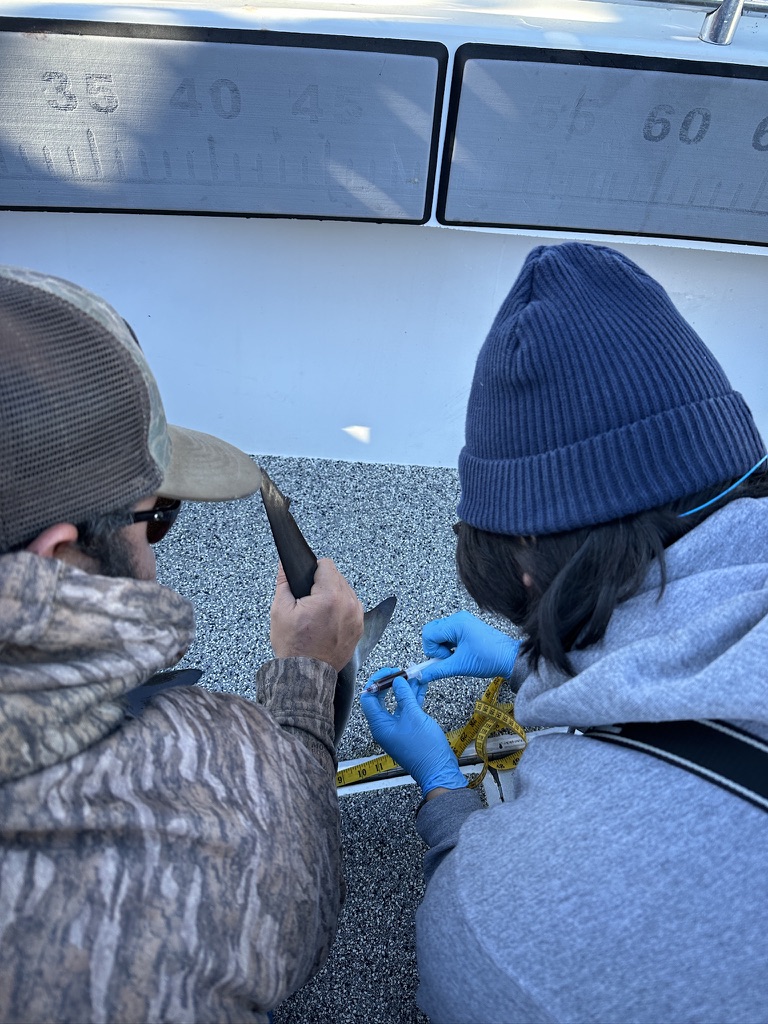
Collecting samples in the field. Photo © Brett Sweezey
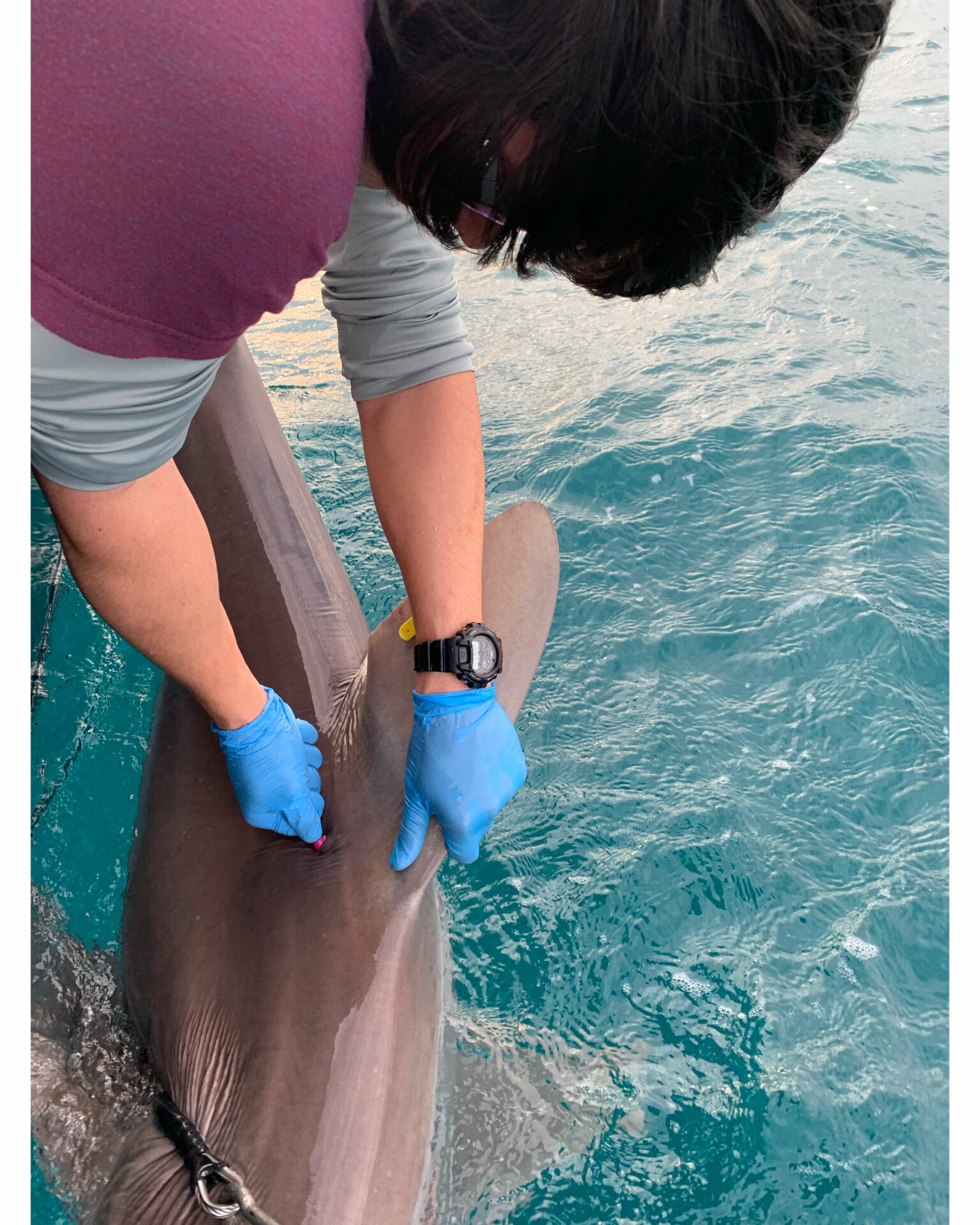
Retrieving samples from a shark. Photo © Brett Sweezey
During predation events, as nitrogen is transferred from prey to consumer (or primary producer such as a seagrass to a primary consumer like a marine snail), we can use SIA to observe an increase in nitrogen levels (~2 to 5‰) as it is accumulated into the tissues. Similarly, we can see this stepwise increase when observing specific amino acids such as glutamic acid which significantly increases (~8‰) per trophic transfer. Other amino acids such as phenylalanine do not increase significantly (<1‰) during trophic transfer, so these amino acids can be used as an indicator for the baseline values of δ15N in the marine environment. The difference in the levels of δ15N between glutamic acid (trophic amino acid) and phenylalanine (source amino acid) can then be used to determine the trophic position of a species relative to the baseline value using a single sample collected from one individual. To put it simply, we are measuring amino acids from tissue samples collected from sharks captured at the Flower Garden Banks to estimate their positions within the food web.
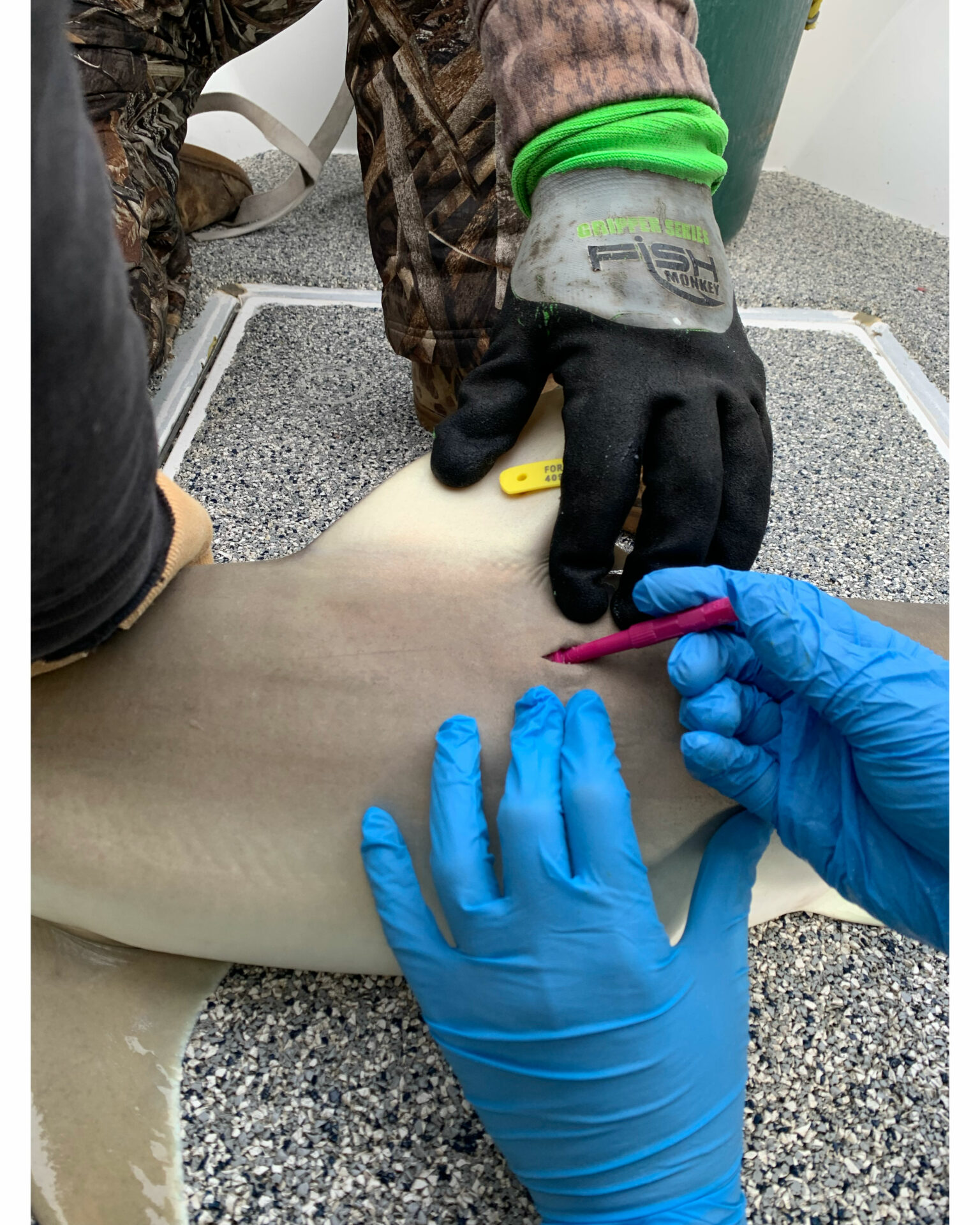
Within a couple of minutes we can collect lengths, girth, sex, biopsy samples, attach an external ID tag, and surgically implant an electronic tag. Photo © Brett Sweezey
Stay tuned for more updates as we prepare our samples for processing!
